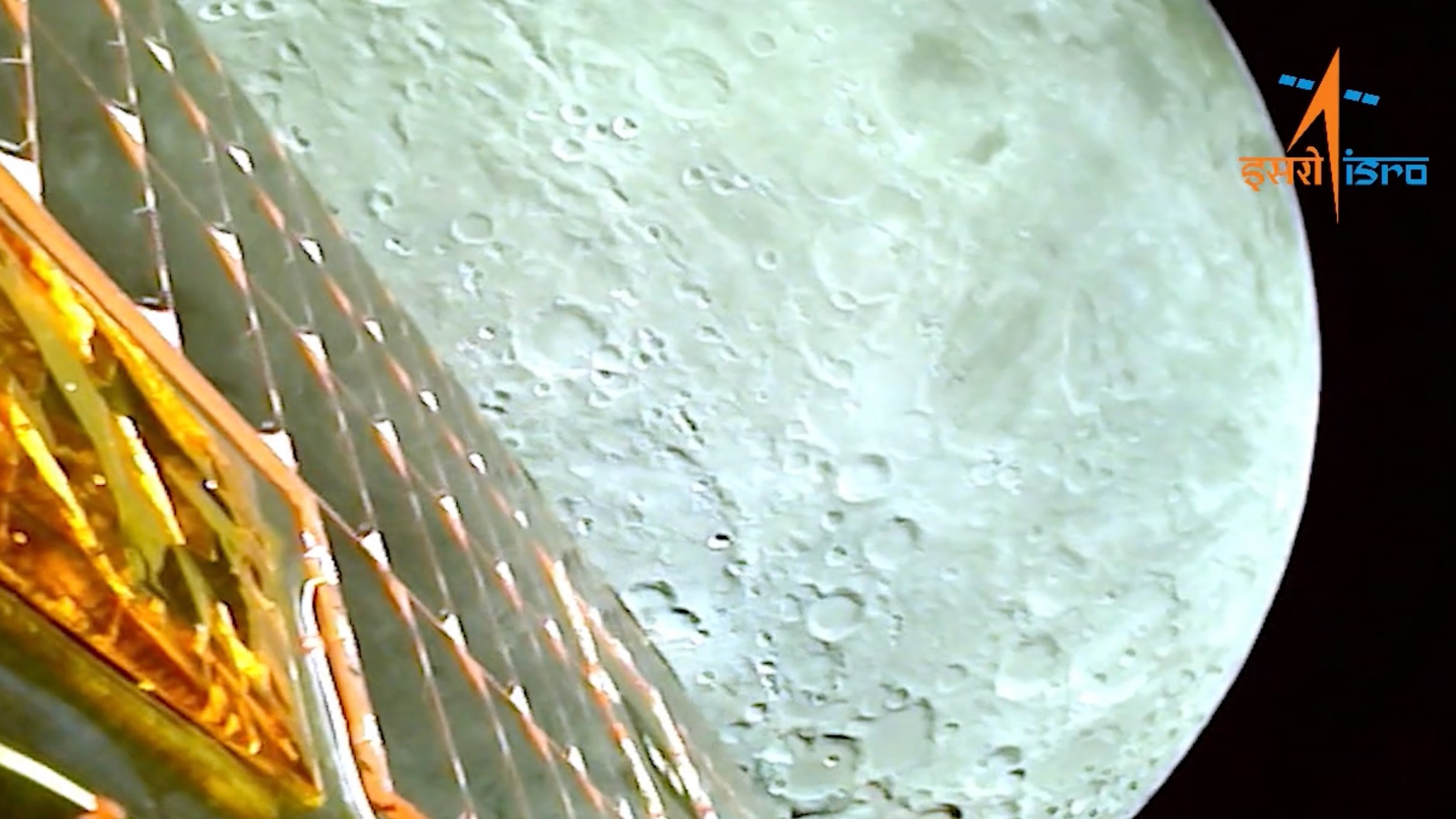India's Chandrayaan-3 moon rover enters lunar orbit, snaps stunning photos (video)
The spacecraft will attempt a historic lunar landing on Aug. 23.
India's Chandrayaan-3 lunar lander has returned its first images from the moon after entering orbit around our nearest neighbor.
The Indian Space Research Organisation (ISRO) released the images on Sunday (Aug. 6), showing that the spacecraft had reached its destination ahead of a lunar landing attempt expected on Aug. 23.
Chandrayaan-3 launched on July 14, heading into an initial highly elliptical Earth orbit. It then gradually raised its orbit before making a burn on July 31 that set it on course for the moon. The spacecraft successfully entered orbit around our natural satellite on Saturday (Aug. 5), according to ISRO.
Related: Chandrayaan-3: A guide to India's third mission to the moon

The spacecraft will conduct further engine burns to bring it into a circular track about 60 miles (100 kilometers) above the surface of the moon a week ahead of the expected landing attempt.
The newly released images, which ISRO stitched into a 45-second video, show the solar arrays of the Chandrayaan-3 spacecraft in the foreground. The moon, with features including large impact craters and lunar mare, or seas, is in the background.
The 6-billion-rupee (roughly $73 million) Chandrayaan-3 mission aims to make a precise landing in the vicinity of the moon's south pole. If it's successful, India will join the United States, the former Soviet Union and China as the only nations to perform a soft lunar landing.
Get the Space.com Newsletter
Breaking space news, the latest updates on rocket launches, skywatching events and more!
The mission's lander, known as Vikram, also carries a small rover called Pragyan. The pair will spend the best part of a lunar day (about 14 Earth days) conducting surface operations and experiments before succumbing to the deep cold of the lunar nighttime.
Join our Space Forums to keep talking space on the latest missions, night sky and more! And if you have a news tip, correction or comment, let us know at: community@space.com.

Andrew is a freelance space journalist with a focus on reporting on China's rapidly growing space sector. He began writing for Space.com in 2019 and writes for SpaceNews, IEEE Spectrum, National Geographic, Sky & Telescope, New Scientist and others. Andrew first caught the space bug when, as a youngster, he saw Voyager images of other worlds in our solar system for the first time. Away from space, Andrew enjoys trail running in the forests of Finland. You can follow him on Twitter @AJ_FI.
-
UFOareAngels Why did the US stop going to the moon? Why wait until 2023 to show us pics like this? Why dont we have a lunar rover? Why havent we built anything on the moon yet? why are we focused on mars?Reply -
billslugg We went to the Moon 1969-1972 in order to establish supremacy over the USSR. It was seen as an existential quest. It was supported by 2.5% of US GDP. We won. We beat the Soviet Union. It's over now. Today NASA spends 0.2% on space.Reply -
SpaceManTom Reply
What does the other 98.8% of 90 million a day budget go to?billslugg said:We went to the Moon 1969-1972 in order to establish supremacy over the USSR. It was seen as an existential quest. It was supported by 2.5% of US GDP. We won. We beat the Soviet Union. It's over now. Today NASA spends 0.2% on space.
The indian moon photo has such a severe curvature. Almost like the circle should be shown on the upper left -
billslugg US budget is $6.3T annually.Reply
This is $12M per minute.
25% Social Security
25% Medicare/Medicaid
16% Military
6% Interest
25% Misc
NASA budget for 2023 is $25.4B
NASA budget is 0.40% of US GDP.
In 1966 it peaked at 4.0% of US GDP.
We are spending one tenth on space what we did in 1966.
The Artemis program to the Moon and beyond is spending $93B, 2021-2025.
This is about 37% of NASA budget.









